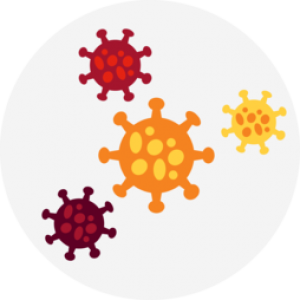American Red Cross Learn Blood Draws
Why we test blood
The people who receive blood are often already quite sick. That makes them more likely to be infected by viruses, bacteria and other nasties, and to have a higher chance of worse outcomes if they do.
So, to protect them we do a lot of testing to make sure everything's OK before any blood donation is sent.

To start with, we test every donation for blood type to help match it to a patient.
Don't know your blood type? We'll tell you yours soon after you've given for the first time.
Why blood type matters

Next, we test all donations for red cell antibodies. They're proteins which react with red blood cells. They're really helpful for you, but may cause problems in a patient receiving your blood.
If the donation is for something special like an anti-D treatment, it's tested for specific antibodies.
Know more about anti-D

We also use seven different tests to screen donations. The tests look for five infectious diseases that can be passed on to patients through a blood transfusion:
- HIV (AIDS virus)
- Hepatitis B
- Hepatitis C
- Human T-lymphotropic virus (HTLV), and
- Syphilis.*
*With infectious disease testing, there are some exceptions. We don't need to test plasma donations for HTLV or syphilis when they're being turned into certain plasma treatments, and we'll test your blood for malaria if you've travelled to or lived in an area where malaria is common.
If you've donated blood and any of these tests are positive, we contact you as soon as possible and help you get counselling and support.
Choosing diseases to screen and test
We use three criteria to determine what risk an infectious disease poses to patient safety.
- Whether the infectious disease is known to (or could potentially) be transmitted by blood transfusion
- How common the disease is in our population
- How severely the infection can affect patients.
We look at all the evidence and current research to work out the risk and how we should manage it. Sometimes risk factors change, so we update our rules when they do.
Preventing risk
Over time, infectious diseases come, go, and sometimes return in a different state. When they can't be reliably detected in tests, have no effective vaccines, or affect a large number of potential donors, they could pose a threat to the blood supply.
- Our 'surveillance framework'
-
Fortunately, we have what we call a 'surveillance framework' to keep an eye on more than 70 emerging, re-emerging and emerged infectious diseases (EREEIDs).
Lifeblood has one of the safest blood supplies in the world. The EREEID framework makes sure it stays that way. Our team actively monitors these EREEIDs and works with our own government, national and international expert groups and researchers on infectious disease developments.
The screening we have now can protect from new and emerging threats because the whole process helps stop us from collecting blood from anyone carrying an infectious disease.
- Example: Zika virus
-
It's like the Zika virus outbreak a few years ago. Zika is more prevalent in countries with other mosquito-borne infections, so our existing policies already covered it and protected our blood supply. We also have a dedicated team who closely monitor emerging and existing infectious diseases.
- Why aren't some people allowed to donate then?
-
Even the most sophisticated tests aren't perfect. Many infections don't show up in testing for a time after the person is infected — it's called the 'window period'. Also, extremely rarely, tests can just not find an infection.
Yet, we still have to keep the people who receive blood safe. That's why we ask eligibility questions and test to keep Australia's blood supply as safe as possible. The questions we ask before a donor gives blood make it extremely unlikely that they have any infections when they donate.
- Other ways you can help
-
We understand that it can be disappointing to find out you can't donate. The good news? There are lots of other ways you can help!
American Red Cross Learn Blood Draws
Source: https://www.lifeblood.com.au/blood/learn-about-blood/blood-testing-and-safety
0 Response to "American Red Cross Learn Blood Draws"
Post a Comment